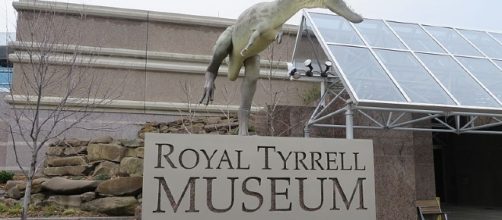A remarkably preserved dinosaur estimated to be an 110-million-years old finally gets a name. After spending over 7,000 hours on the dinosaur specimen, Royal Tyrrell Museum technician earns an unexpected reward.
New kind of nodosaur named Borealopelta markmitchelli
In 2011, Shawn Funk, a machine operator who worked in the Suncor Millennium Mine located near Fort McMurray in Canada uncovered well-preserved remains of a dinosaur. Six years later, the unspoiled fossil finally gets a name.
The dragon-like dinosaur is a new type of nodosaur which is called the Borealopelta markmitchelli.
ECNS describes the specimen as the best-preserved dinosaur fossil ever witnessed by man, and the best specimen in the world.
The Borealopelta markmitchelli is an armored dinosaur. The creature’s height measures 5.5 meters. Technician Mark Mitchell knows every inch of the dinosaur coined after him. Research suggests that the enormous creature roamed Alberta about 110 million years ago. According to Edmonton journal, the nodosaur weighed about 1,300 kilograms, an armored fellow who was fond of plants. A recently concluded study on the fossil isolated a red-brown pigment which scientists believe indicated the dinosaurs color.
Museum technician gets rewarded for dedication and exceptional work
The new dinosaur was named after the Royal Tyrrell Museum technician Mark Mitchell.
Mitchell dedicated more than 7,000 hours of Hard Work on the fossil. The technician spent the past six years to carefully clean the fossil and remove rocks and soil particles from the specimen.
As a reward for his exceptional dedication, Mitchell received the news that the new species of dinosaur which he carefully worked on would finally get a name that bears his own.
The dinosaur was coined as the Borealopelta markmitchellii, which, if translated, means Mitchell’s northern shield.
But technician Mitchell could not share the good news with anyone at instantly. He was instructed to keep the news from anyone until its official announcement last August 3. Mitchell considers the matter as an incredible honor.
Working on dinosaur fossils was the realization of Mitchell’s childhood dream. He commenced his job at the Royal Tyrrell Museum in the year 1996. Since then, the technician has already worked on around 25 to 30 specimens. But Mitchell considers the working of the Borealopelta markmitchellii as the “crown jewel” of his entire career as a technician. For him, the new nodosaur trumps all others.


